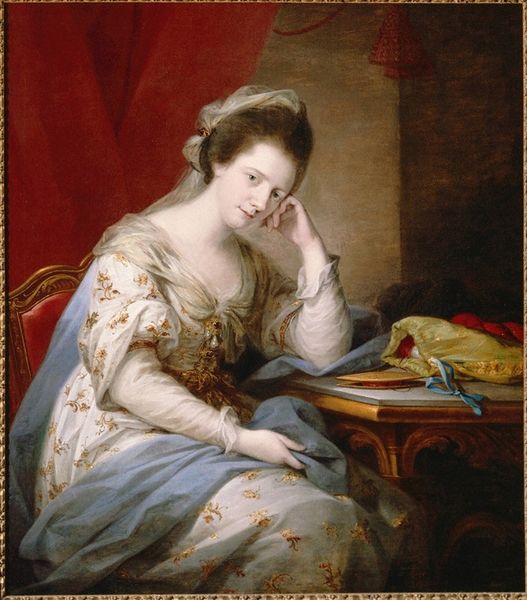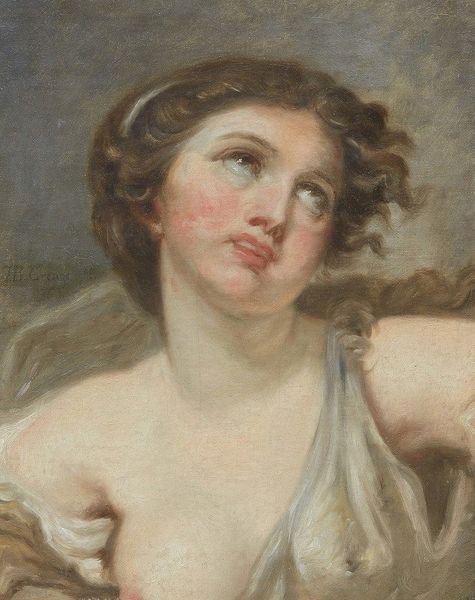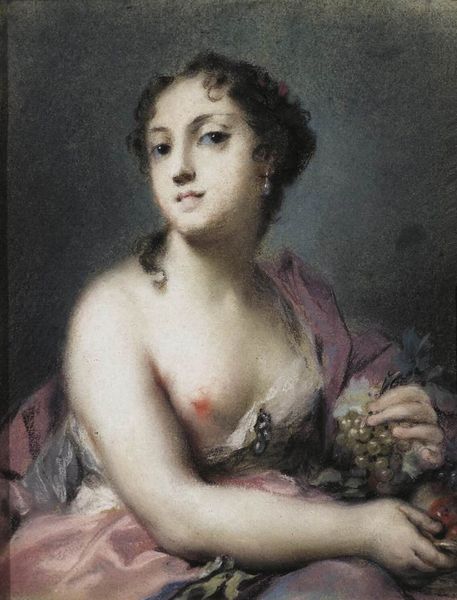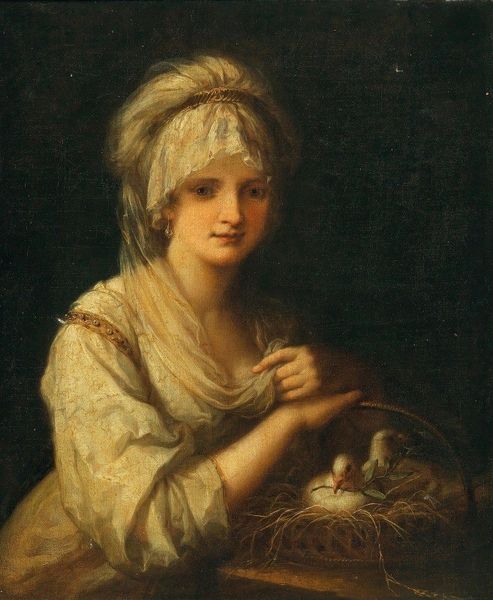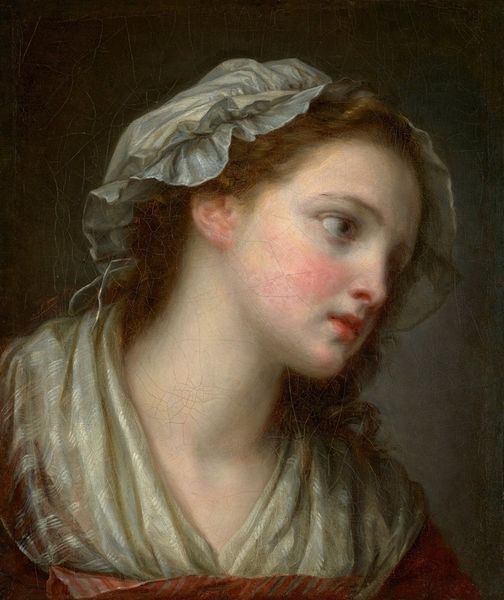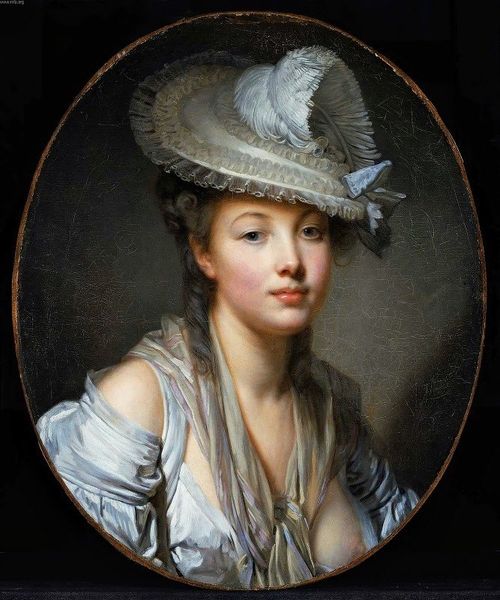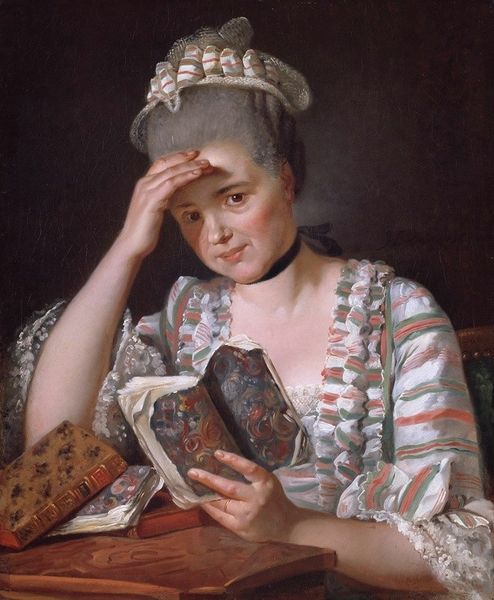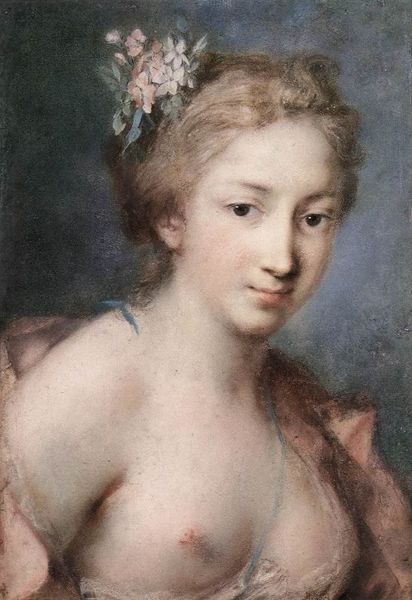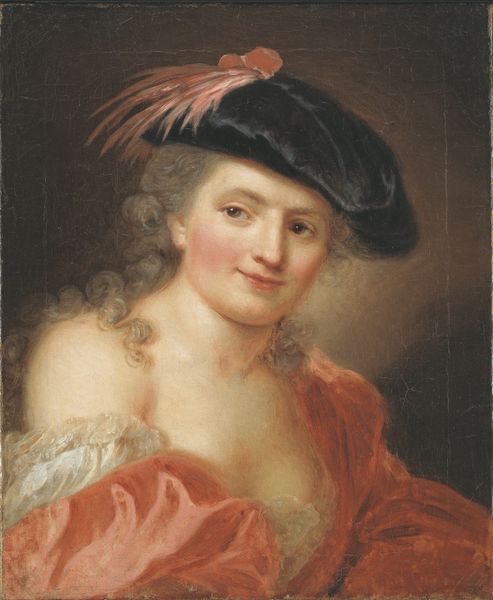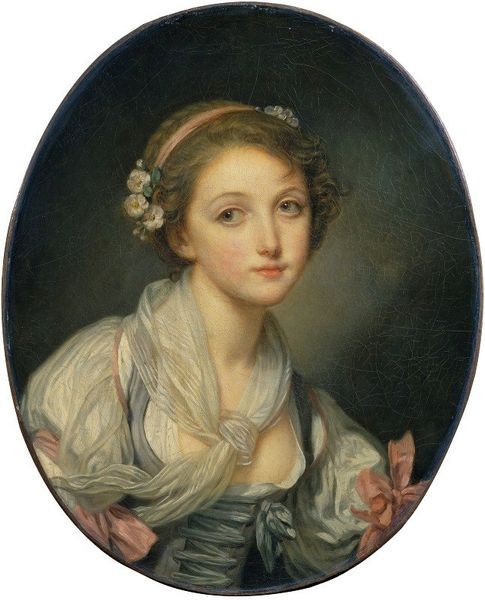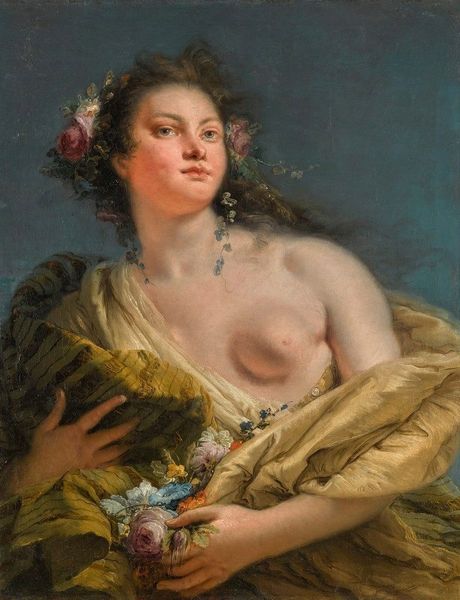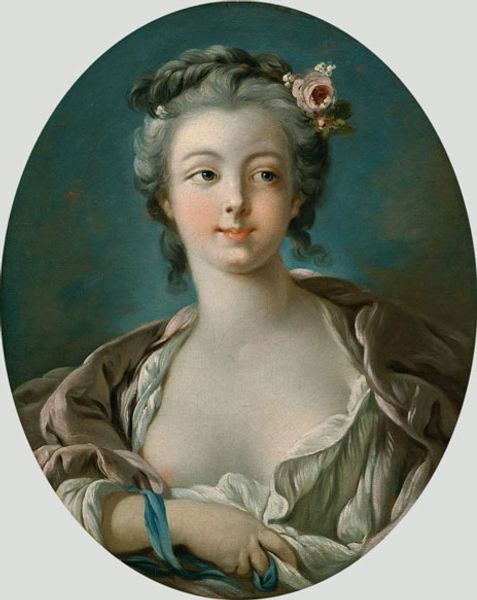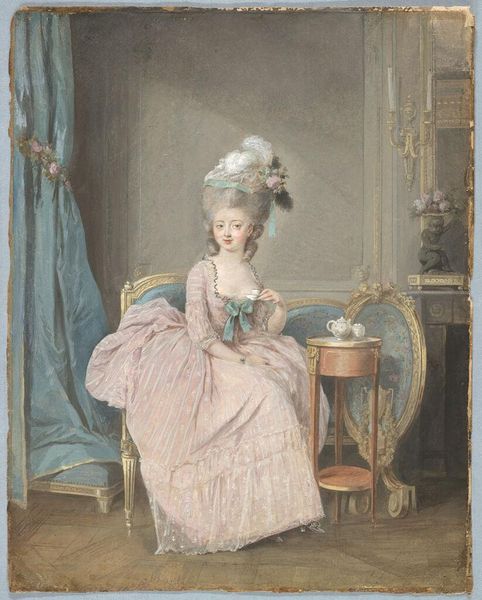
painting, oil-paint
#
portrait
#
portrait
#
painting
#
oil-paint
#
figuration
#
realism
#
rococo
Copyright: Public domain
Editor: Here we have “Young Girl with a Rose,” an oil painting portrait by Jean-Baptiste Greuze. There's an innocence to her expression, almost bashful. What kind of stories do you see in her face? Curator: This work speaks to the way young women were presented and perceived in Rococo art. Her pose, with her hand partially obscuring her face, is both coy and knowing, isn't it? The rose itself, centrally placed near her heart, becomes a powerful emblem. Editor: Emblem of what, exactly? Love, obviously? Curator: Yes, love and beauty, but also transience. Think of the “rosebuds” of poetry, metaphors for fleeting youth and potential. The rose on her dress is an explicit representation of beauty. It’s pinned carefully; that specific flower stands as a token of an aesthetic sensibility prized within her class. Editor: So, the artist’s chosen symbolism speaks to more than the woman’s individual story. Curator: Exactly. She embodies idealized virtue and delicate beauty, but the image goes further: She has become, via her own fashioning, the embodiment of the Rococo moment. It makes me consider ideas about cultural identity and performance. Do you think this symbol might have carried a slightly different meaning for someone living then versus today? Editor: I suppose so, given how tastes and perceptions change. So, it’s important to remember that images speak in dialogue with time itself. Curator: Precisely! We bring our cultural awareness to an object that reflected very specific cultural values to its original audience.
Comments
No comments
Be the first to comment and join the conversation on the ultimate creative platform.
